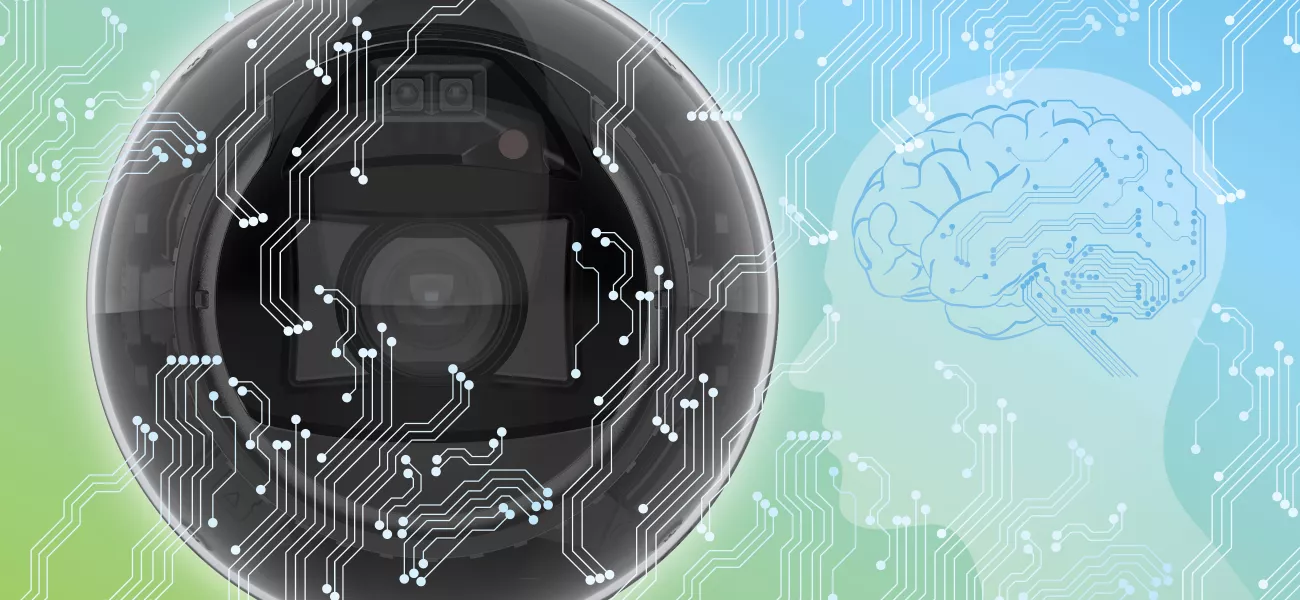
Everyone is talking about AI, and the security and video surveillance industry is abuzz with the potential. With more products coming to the market, customers are considering the move to AI-powered cameras and weighing up the benefits.
Axis has made a commitment to AI in our products. Consequently, all our newly developed cameras are supported by AI. Fundamental to many of the AI and deep learning capabilities in our portfolio is the system-on-chip (SoC). In this article, we examine why it’s worth considering AI-powered cameras as your next investment, not only in terms of future proofing, but also for the benefits today.
Long-term thinking: future-proofing security solutions
Customers of security and video surveillance solutions need to think long-term – a security camera can have a useful life of five years or more. Over this time a new camera needs to be seen as a platform for future use cases and value. While AI-powered security cameras bring real benefits today, future platform innovations will accelerate the capabilities of AI-powered cameras across every industry.
The role of AI and deep learning in video surveillance is growing, enabling us to increasingly ‘teach’ our security cameras to be far more intuitive about what is happening in the scene and analyzing it in real-time. If customers only focus on the AI-enabled analytics available today, they may miss the potential of the as yet undeveloped applications coming both in the near and long-term future.
Realizing immediate benefits of AI cameras
Investing in AI-powered cameras may seem unfamiliar to some people. However, there are many immediate benefits to be gained from this investment. An investment in an AI camera will bring benefits to security, safety and operational efficiency from as soon as the camera is deployed. Most of the AI cameras in our portfolio benefit from deep learning-based analytics, enabling more accurate object detection and classification of scene details.
Previously, edge analysis of surveillance camera footage using video motion detection showed that something or someone was moving. Following this, and after further analysis by a video management system (VMS), a human operator could interpret exactly what caused the motion and if it presented any threat or security risk.
However, through deep learning, we can now ‘train’ a camera system to recognize and classify certain objects automatically, so that operators can focus on actual threats instead of swaying vegetation, fast-moving shadows, etc.
The classified objects are sent as metadata to the VMS for further analysis by a human operator or used to trigger automated responses based on pre-set rules. As the initial analysis takes place on the camera – as opposed to a server or in the cloud – valuable bandwidth can be saved as only relevant data is sent through the system.
Metadata created alongside the video – essentially detailed information about what is happening in the scene and the objects that are present – delivers a major leap forward. The potential is incredibly valuable for searching through vast amounts of video including vehicles and people – and the attributes associated with those objects, such as colors of vehicles and clothing or the direction of travel.
Scene metadata is also central to spotting patterns and trends in aggregated data collected which is invaluable for better predictions, forecasting and decision-making. It can help monitor changes and track anomalies for a clearer picture of what is happening over time.
Optimizing operations with edge-based analytics
The greater accuracy of edge-based analytics powered by AI – and the ability to distinguish between multiple classes of objects – immediately reduces the rate of false positives and false negatives. With that comes a related reduction in time and resources to investigate the false positives. Today, edge analytics can create a more appropriate and timely response. Distributing processing throughout the system lowers costs and enables a better user experience with greater customer value.
Axis offers different ways to get access to edge-based analytics which are compatible with our devices. Axis-developed analytics are specifically designed to work optimally with our devices and offer a wide range of solutions to diverse use cases. Through AXIS Camera Application Platform (ACAP)– a platform designed to lower the threshold for developers moving to the edge – it is possible to get access to partner developed analytics applications that work on the edge, or develop tailor made analytics designed to solve specific use cases.
The potential of AI-powered cameras is only limited by the imagination of developers. They are constantly looking to expand analytics capabilities, as well as driving the creation of a new generation of analytics applications.
Embracing AI: a forward-thinking decision
The move to AI-powered cameras shouldn’t feel like a leap of faith – at most it’s a small step of imagination. The benefits are real. Anyone that has experienced the benefit of fewer false alarms, made possible by using AI, will never look back.
Security cameras have a long lifecycle; an investment in AI cameras today will be a decision that unlocks value for years to come. Don’t hinder the capabilities of your video surveillance system tomorrow through a short-sighted decision today.